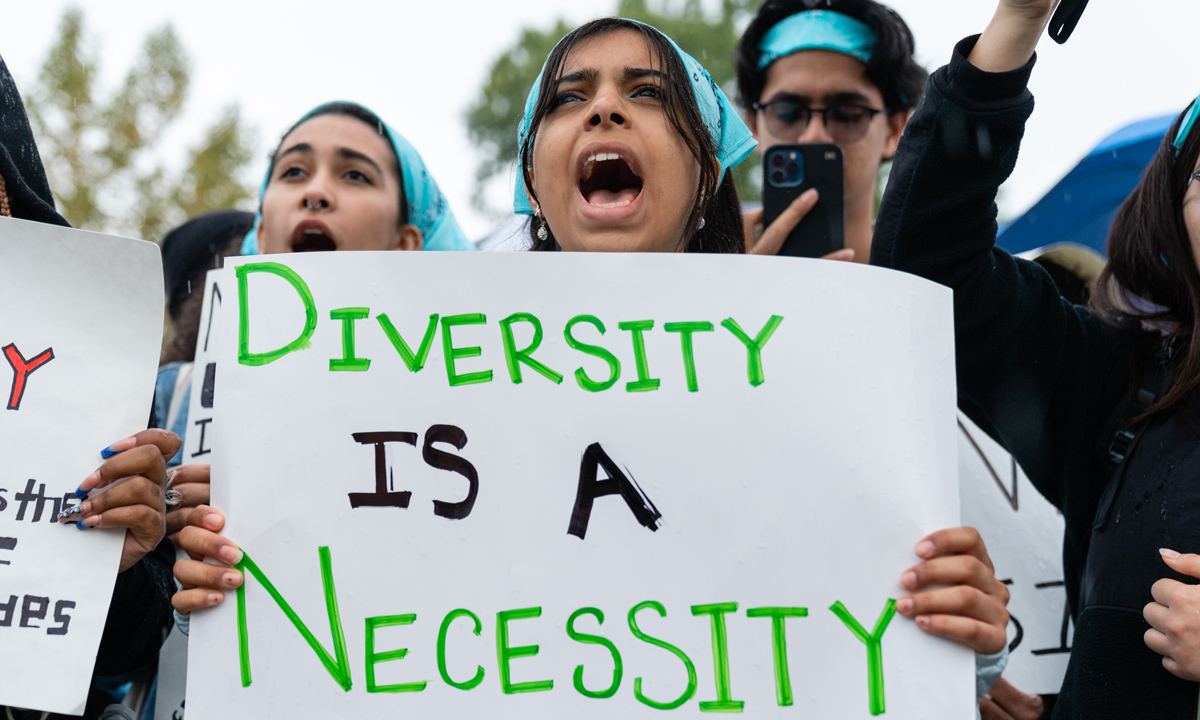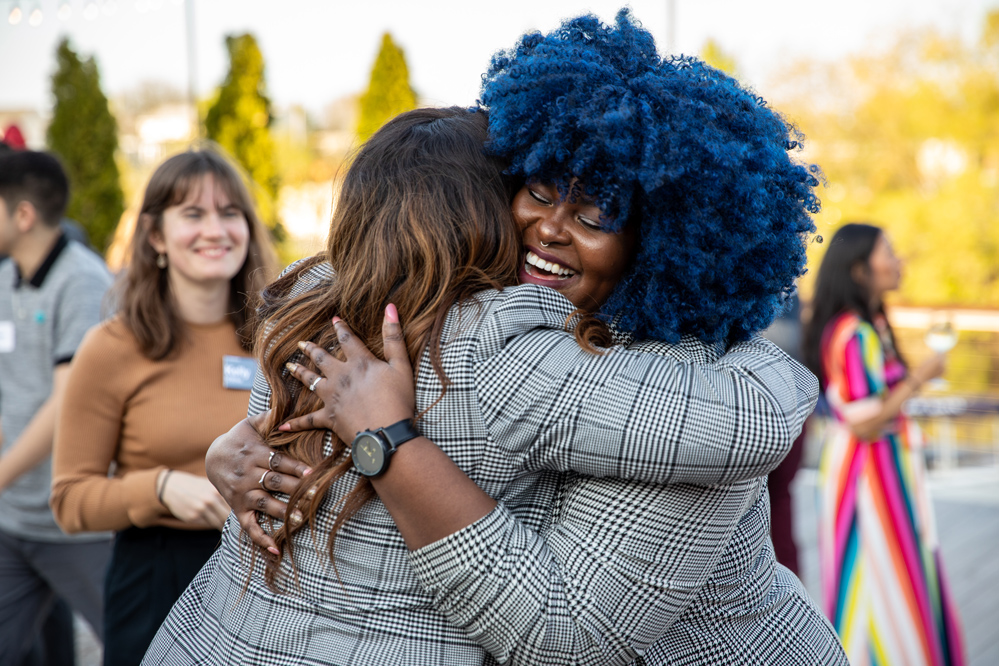A Ruling Against Harvard Might Not End Diversity-Based Admissions, Experts Say
But rejecting long-standing entrance policies could upend a host of education mainstays, from scholarships to the centrality of standardized tests.

Get stories like this delivered straight to your inbox. Sign up for The 74 Newsletter
With a conservative U.S. Supreme Court widely expected to overturn race-conscious admissions in higher education, attention in the education community has already shifted to what happens next.
One likely effect is obvious. “There is going to be some closing of doors,” said Halley Potter, a senior fellow at The Century Foundation, a progressive think tank. “It’s going to be a landscape in which it’s harder to secure access in most competitive schools.”
But further down the line, a ruling against schools that factor race in admissions could affect a host of other academic mainstays, from scholarships to the centrality of tests like the SAT and ACT.
The ruling might not end diversity efforts outright. Granting preferential admission to low-income students, children of single parents or those from communities where students often don’t go to college could achieve similar results, experts say, without courting legal trouble.
“Most Americans don’t want race used in admissions, but Americans do want selective institutions to be racially diverse,” said Richard Kahlenberg, a non-resident scholar at Georgetown University’s McCourt School of Public Policy, and an expert on integration. He thinks the court’s decision could reflect that paradox. “They don’t want to be seen as simply dismissive of the aspiration of racial diversity.”
The court is expected to issue decisions in two lawsuits — brought by Students for Fair Admissions against Harvard University and the University of North Carolina — later this month. The plaintiff in both cases argues that the weight universities place on race in admissions violates anti-discrimination laws and puts Asian American students at a disadvantage.
‘Next generation’
While the cases don’t deal directly with K-12 schools, the high court’s decision could elevate the importance of a recent lower court ruling rejecting a legal challenge to diversity efforts at an elite Virginia high school. Thomas Jefferson High School for Science and Technology in Alexandria, Va., removed a rigorous admissions test and a $100 application fee, and reserved seats at the school for the top 1.5% of 8th graders in each middle school. Coalition for TJ, the plaintiff in the case, called the revised admissions criteria discriminatory against Asian American students.
The 4th Circuit Court of Appeals rejected that view. “The policy challenged here is not just race-neutral: It is race blind,” Fourth Circuit of Appeals Judge Toby Heytens wrote in the May 23 opinion.
The conservative Pacific Legal Foundation, which represents the plaintiffs, said board members’ desire to increase the number of Black and Hispanic students at the school motivated the new policy. They plan to ask the Supreme Court to hear the lawsuit.
Kahlenberg, who testified on behalf of Students for Fair Admissions about race-neutral alternatives, called the TJ case a “next generation issue.”
If the Supreme Court rules that universities can no longer ask applicants to identify their race, they might see the Fairfax case as a chance to “spell out in further detail the line between what is acceptable and unacceptable,” he said. “I think the answer will be that the TJ program is perfectly fine.”
‘Formative experiences’
The college admissions industry, meanwhile, has been preparing for the end of affirmative action for months. Beginning in August, for example, colleges can hide a student’s race if it’s included in the Common App, a uniform application for undergraduate admissions accepted at more than 1,000 colleges and universities nationwide.
The American Association of Collegiate Registrars and Admissions Counselors advised institutions earlier this year to review all of their policies and practices related to diversity, equity, and inclusion and to examine any area, such as mission statements and recruitment efforts, where race is a factor — “no matter how minor” — to determine if changes are needed.
Organizations that focus on high school graduation and college enrollment say they plan to continue to identify students who would be the first in their families to attend college, regardless of race.
“In some ways for us, it will be business as usual — to serve underserved students. That’s been really the heart of our work long before this became a hot-button issue,” said Pam Johnson Davis, director of fellow support for OneGoal, a nonprofit that works in eight states to increase graduation and college enrollment rates. Eighty-six percent of the students served by the organization are Black or Hispanic. She supports 400 “fellows” in the Chicago area who are already in college or another postsecondary program.
If students are barred from bringing up their race even in their admissions essays — a hypothetical scenario that came up during Supreme Court oral arguments — teachers at OneGoal schools would still encourage students to write about barriers they overcame to pursue education, Davis said.

Facing discrimination, raising younger siblings, translating for parents who don’t speak English — “these are really formative experiences in students’ lives,” she said. “Their stories will be shaped by their cultural and socioeconomic backgrounds.”
Stephen Barker, a spokesman for the organization, added that opportunities for Black and Hispanic high school students to earn college credit could become more important for colleges and universities if the court strikes down affirmative action in admissions.
“Institutions need to double down on those partnerships [with districts] if they want to keep that diversity going in a race-neutral way,” he said.
But he said it’s hard to predict what importance universities might place on other aspects of a student’s application, including GPAs, honors classes, and SAT and Advanced Placement exam scores if race no longer factors into the equation.
The potential end of affirmative action in admissions could further accelerate a growing movement away from requiring the SAT or ACT for admission, with some researchers and advocates for educational equity arguing the tests are biased against Black and Hispanic students and reinforce racial inequities. According to FairTest, an advocacy group, 1,900 institutions are now test-optional or don’t even accept the exams.
But others say that criticism of the tests is misguided and that they still serve as a good predictor of how well students will perform in college. Adam Tyner, national research director at the Thomas B. Fordham Institute, a conservative think tank, said the tests are “deeply vetted” to remove content that might disadvantage minority students. GPAs, he added, are less controversial, but large racial gaps remain.
He doesn’t think the test-optional trend is only about removing barriers for Black and Hispanic applicants. Admissions officers may have other motivations, he said.
“Either [universities]think that the exams aren’t so important or … they, for financial reasons, desire an excuse for admitting more affluent students with less academic preparation,” he said.
With or without admissions exams, the end of race-conscious admissions would put more pressure on K-12 counselors serving Black and Hispanic students, Kahlenberg said.
“For years, the [private] prep school kids have had the upper hand. There are fewer students per counselor and they can put time into writing impressive letters [of recommendation],” he said. “Here’s an opportunity for public school counselors to paint a picture of students who have done remarkably well despite the barriers.”
Get stories like these delivered straight to your inbox. Sign up for The 74 Newsletter

;)
